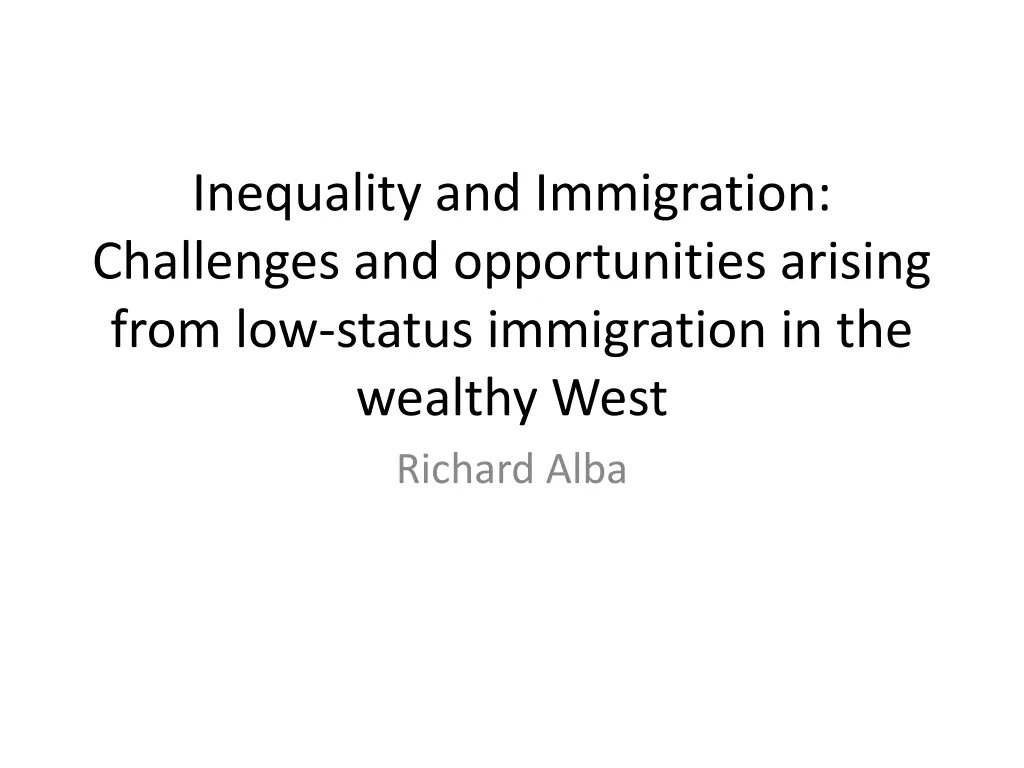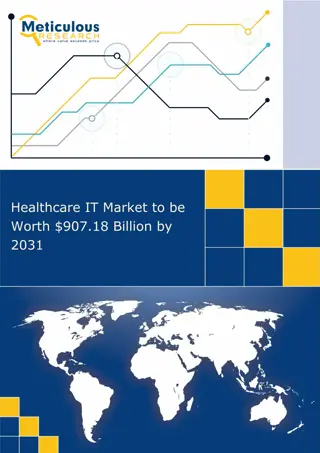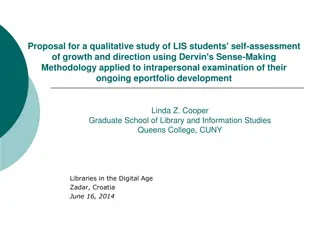
Challenges and Opportunities of Low-Status Immigration in the Wealthy West
Explore the complexities of low-status immigration in the wealthy West, focusing on the labor market, demographic shifts, and societal implications. Learn about the modes of entry for these immigrants and the evolving landscape of ethno-racial distinctions in Western countries.
Download Presentation

Please find below an Image/Link to download the presentation.
The content on the website is provided AS IS for your information and personal use only. It may not be sold, licensed, or shared on other websites without obtaining consent from the author. If you encounter any issues during the download, it is possible that the publisher has removed the file from their server.
You are allowed to download the files provided on this website for personal or commercial use, subject to the condition that they are used lawfully. All files are the property of their respective owners.
The content on the website is provided AS IS for your information and personal use only. It may not be sold, licensed, or shared on other websites without obtaining consent from the author.
E N D
Presentation Transcript
Inequality and Immigration: Challenges and opportunities arising from low-status immigration in the wealthy West Richard Alba
Plan of talk Overview of immigration in the U.S., Canada, and four Western European countries. Immigrants in the labor market. The demographic transition to immigration- fueled diversity and its near-future labor-market significance. The second generation in schools and the labor market. Signs of change, as seen in the U.S. Summing up: Achieving a balanced view.
Immigrants in the U.S. 45,000,000 16 14.8 14.7 14.4 40,000,000 14 13.0 13.6 13.0 12.9 13.3 13.2 13.2 35,000,000 12 11.6 30,000,000 11.1 10 9.7 25,000,000 8.8 8 7.9 20,000,000 6.9 6.2 6 5.4 15,000,000 4.7 4 10,000,000 2 5,000,000 0 0 1850 1860 1870 1880 1890 1900 1910 1920 1930 1940 1950 1960 1970 1980 1990 2000 2010 2011 2012 Number of immigrants Immigrants as a percentage of the U.S. population Source: National Academy of Sciences 2015 report on immigrant integration
Basic immigration data, six countries, 2009-14 ? Alba and Foner, Strangers No More (2015)
Multimodality of immigration Immigration is a major force for population change in almost all the wealthy countries of the world. Immigration is internally heterogeneous, differentiated by legal conditions of entry, human capital, ethno- racial distance from the native population. Some major types of immigrations: Labor-seeking, e.g., Mexicans in U.S. High human capital, e.g., Indians in U.S. Post-colonial, e.g., North Africans in France Refugees, Cubans in U.S., Syrians in Europe Family reunification, e.g., Home-country marriage partners in Europe Temporary, H-1B workers in U.S.
Low-status immigrations Some immigrant groups arrive with considerable human capital, whose members often take well-paid and prestigious positions, for example, in medicine and engineering. Focus here is on low-status immigrants: groups dominated by individuals g with low levels of education, who typically end up in poorly paid, sometimes off the books, jobs that are frequently dirty and sometimes dangerous and demeaning. These immigrants are also stigmatized because of their ethno-racial backgrounds. The labor of low-status groups is still very much wanted because of the expansion low skill jobs, especially in service work, that most natives shun. Yet they are also at the core of ethno-racial distinctions that are emerging or growing in the wealthy west.
The modes of entry of low-status immigrants Often not desired as permanent settlers. In continental Europe, they often entered initially as guestworkers, who were expected to go home e.g., Turks in Germany and the Netherlands. Also came from former colonies Algerians in France and treated as outsiders therefore. In the U.S., often disadvantaged by defective legal status unauthorized or TPS.
Low-status immigrants and the labor market Low-status immigrants are typically found in low- wage sectors of the labor market; in some sectors, they have displaced native workers. In some countries, they suffer higher rates of unemployment than native workers. Their earnings are lower; their risk of poverty is higher. But the degree of inequality is variable. These variations defy facile generalizations about liberal market (U.S., U.K.)/social market economies (France, Germany).
Labor-force characteristics of low-status male immigrants, 5 countries, 2006-8 ? ? 2008,? outside-EU? immigrants,? ages? 25-54? ? ? France? Germany? Netherlands? United? Kingdom? United? States? Labor? force? Natives? 95? 94? 96? 92? Unemployment? Immigrants? 5? 6? 1? 4? Immigrants? Natives? 91? 90? 86? 89? 13? 15? 4? 7? 2006-8,? Hispanic? immigrants,? ages? 25-54? ? Sources: Eurostat report (2011); ACS tabulations. 88? 92? 5? 4?
Income and poverty risk, 5 countries, 2007-8 ? ? ? Equalised? disposable? household? income? natives? immigrants? from? outside? the? EU? Risk? of? poverty? natives? Immigrants? from? outside? the? EU? 14? 19? 13? 18? ratio,? immigrant? to? native? income? France? Germany? Netherlands? United? Kingdom? ? 18,574 ? 19,839? 20,788? 21,275? 13,893 ? 15,066? 17,931? 18,496? .75? .76? .86? .87? 40? 33? 25? 29? ? Hispanic? immigrants? $17,746? ? ? Hispanic? immigrants? United? States? ? ?Source: Eurostat report (2011); CPS calculations. $31,050? .57? 17? 43?
An historic transition underway Because of immigration, all western societies are facing a demographic transition to a much more diverse working- age population. During the next quarter century, this transition will result from a conjunction of two forces: The exit from the work force of the large, heavily native, baby-boom cohorts born after World War II. The maturation of very diverse youth cohorts, containing many who have grown up in immigrant homes. Historically, the U.S. mostly has recruited its most highly skilled workers and its leadership from white men. What will these changes mean?
US population, as counted in 2010 and projected (by the Census Bureau) in 2035 Women Men 80-84 Note: 70-74 60-64 2010 50-54 40-44 Red=non-Hispanic whites 30-34 20-24 10-14 0-4 Blue=minorities 80-84 70-74 2035 60-64 50-54 40-44 30-34 20-24 10-14 0-4 15,000,000 10,000,000 5,000,000 0 5,000,000 10,000,000 15,000,000 Source: Alba and Foner (2015).
Dutch population pyramid, 2010 Orange=native Dutch; blue=Western immigrant origins; green=non-Western immigrant origins (1st and 2nd gens.) Women Men Source: Alba and Foner (2015).
Next quarter century is crucial The departure from the baby boom (born between 1946 and 1964 in the U.S.) will create fluidity. Generally, this group is made up largely of the native majority; and it was the first to experience mass higher education, Highly placed in labor market, in numerous positions of civic leadership. The native majority group is youthful cohorts is much smaller--Who will replace the baby boomers?
Immigrant-origin youth In the U.S., about a quarter of children are growing up in immigrant homes. In the Netherlands, young people of immigrant origins account for almost a quarter (22.5 percent) of youth under the age of 21. In France, about one-sixth (17 percent) of all children are growing up in immigrant homes. In the United Kingdom, about a quarter of all children are now members of ethnic minority groups, mostly of post-1950 immigrant origin.
Low-status immigrations & the second generation Two-thirds of immigrant-origin children in the Netherlands have non-western origins, most are in families that come from former colonies or Morocco or Turkey. Sixty percent of such children in the US have Latin American or Caribbean origins. Half of immigrant-origin children in France have African backgrounds.
Educational credentials of native and second- generation youth in selected countries ? no secondary credential England and Wales (various ages, Youth Cohort Study and Longitudinal Study) ? white British? 39.5? _? Afro-Caribbean? 54.4? _? Pakistani/Bangladeshi? 48.4? _? France (ages 26-35, 2008 Trajectoires et Origines survey)? males ? native French 12.5 North Africans 27.4 females native French 12.2 North Africans 20.5 Germany (ages 18-35, Berlin & Frankfurt, 2007-08 TIES data)? native Germans 13.2 Turks 31.2 United States (ages 26-35, 2005-09 American Community Survey)? males? ? Anglo natives? 8.0? U.S.-born Mexicans? 20.8? females? Anglos? 5.8? U.S.-born Mexicans? 16.3? ? ? basic secondary credential some post- secondary university degree _? _? _? 28.8? 41.7? 32.0? ? ? ? 36.4 30.1 27.6 26.4 23.5 16.1 31.9 32.0 30.1 30.9 25.7 16.5 67.1 62.1 19.7 6.7 Souce: Alba and Foner (2015). ? ? ? 28.2? 34.3? 31.4? 31.8? 32.5? 13.0? ? ? ? ? 21.1? 29.1? 33.3? 36.8? 39.8? 17.9? ?
Second generation in labor market Inadequate evidence, but: In Britain, Bangladeshi and Pakistani second generations have higher unemployment, as well as relatively high employment by minority bosses (Sin Yi Cheung 2014). In France, African and Turkish second generations also have high rates of unemployment and of employment in jobs below their qualifications (Silberman and Fournier, 2007). In the U.S., employment is less the issue than the quality of jobs. Luthra and Waldinger (2010) found that second-generation Mexicans are more likely to hold jobs with health and retirement benefits and to receive lower pay.
Period of ethno-racial fluidity? Change = alteration to ethno-racial boundaries, not simply enhanced opportunities for some minority individuals Example: mid-20th century assimilation of white ethnics in the U.S. My claim: Key is non-zero-sum mobility, a lessening of competition, which allows minorities to rise without threat to life chances of majority Exodus of the baby boom from the labor market creates the prospect of non-zero-sum mobility during the next 25-30 years, into the 2030s
Changes in employment by occupational percentile Smoothed Changes in Employment by Occupational Skill Percentile 1980-2005 .4 .3 Change in Employment Share .2 .1 0 -.1 -.2 0 20 40 60 80 100 Skill Percentile (Ranked by Occupational Mean Wage) Figure 1. Smoothed Changes in Employment Shares by Occupational Skill Percentile, 1980 - 2005 Source: Autor & Dorn (2013)
Analysis Start with occupations scored by median incomes of full-time workers Identify top quartile as the most highly paid occupations that account for one quarter of the full-time work force Use 2000 PUMS and 2009-11 ACS to analyze changes in the top quartile across a decade Questions: Has increase in ethno-racial diversity at the top of the work force relented? Has white advantage intensified?
? Growing diversity at top of U.S. workforce: white majority percent of top occupational quartile, by cohort ? Age:? 2000/? 2010? 2000? ?? 2010? ? ? Baby?boom?cohorts? ? 26-35/? 36-45? 77.0? 72.8? 36-45/? 46-55? 82.2? 80.9? 46-55/? 56-65? 86.0? 85.3? ? 56-65/? ? 88.3? /26-35? 69.4? Source: 2000 Census PUMS and 2010 ACS
Minority composition, top quartile jobs, 2000 & 2010, by age ? ? 30.0? 25.0? 56-65? ? ? ? ? ? ? ? ? ? ? ? 46-55? ? ? ? ? ? ? ? ? ? ? ? ? ? ? 36-45? ? ? ? ? ? ? ? ? ? ? ? ? ? 26-35? ? f-b? Asians? 20.0? n-b? Asians? f-b? Hispanics? 15.0? n-b? Hispanics? 10.0? f-b? blacks? n-b? blacks? 5.0? 0.0? 00? 10? 00? 10? 00? 10? 00? 10? ? Source: 2000 Census PUMS and 2010 ACS.
Knock-on effects of immigration- fueled diversity in the U.S. Social mobility by minorities brings about greater equal-status contact between them and members of the white majority in schools (esp. colleges & universities), workplaces, and neighborhoods. Greater equal-status contact makes for socially more intimate relationships, including the formation of families. The children of these families give us insight into the social significance of this integration.
Rise of intermarriage (marriage across major lines of race and Hispanic origin) ? Source: Pew Research Center (2017).
Ethno-racial mixes among 2013 infants Other minority mixes 16% Black- Hispanic 5% White- Hispanic 42% White- Other 3% White- Mixed 12% White- Asian 11% White- Black 11% Source: Our analysis of the 2013 American Community Survey Public Use Microdata
Median family incomes for infants with different parent combinations, 2013 Father Unmixed Couples White Asian Black Hispanic American Indian Mixed Couples White Hispanic White Black White Asian White American Indian White Mixed Black All Other Mother Median Income % White Asian Black Hispanic American Indian 72,800 90,000 40,000 34,800 22,900 56.40 5.30 6.40 17.00 0.30 Hispanic White Black White Asian White American Indian White Mixed White Hispanic 70,000 57,600 78,500 45,000 105,900 108,000 47,500 47,500 77,000 68,000 30,000 55,000 2.90 3.30 0.30 1.20 1.10 0.50 0.20 0.30 0.90 0.90 0.50 2.60 Source: Our analysis of the 2013 American Community Survey Public Use Microdata
Evidence of social integration of individuals from mixed majority- minority families Identity fluidity that leans white (Lee and Bean, 2010; Pew, 2015; Liebler et al., 2017) Social relations more common with whites than with persons of same minority origin (Pew, 2015) Marriage with whites the predominant pattern (Miyawaki, 2015) However, those with one black parent are an exception and have some experiences police contacts--similar to those of African Americans (Pew, 2015).
A paradoxical future: A changing mainstream The top tier of workers in the U.S. gives insight into the mainstream: An inescapable shift appears underway from a top tier dominated by the native majority to one that is more diverse. This is likely happening elsewhere as well. The occurrence of change is validated by the rising level of intermarriage and the social integration of the children from these families with whites. In the U.S., the growing mainstream diversity is especially associated with immigrant-origin groups, Asians above all, but also Latinos and immigrant-origin blacks. The African-American presence is not changing as much. Limited economic growth does not appear able to prevent some degree of shift, though the magnitude of the shift will be larger if growth accelerates.
The paradox continued: Inequality and white advantage are maintained Changes to the mainstream do not change the overall extent of economic inequality, but rather the ethno- racial composition of different tiers. And, ceteris paribus, members of the native white majority are still more likely to land best jobs. But in the U.S. Asians are close behind and hold educational advantages over whites. The big story among Latinos and, to a lesser extent, black Americans is the growing heterogeneity within these categories, differentiated by mixed ancestry, generation, education, birth cohort, etc.
The workforce challenges of the next quarter century Large shift in ethno-racial composition of the workforce in wealthy Western countries. Substantial shrinkage in the pool from which most high-level workers have historically been recruited: college-educated native majority men. These countries need to: Do a better job of bringing minority men and women to educational parity. Ensure that those who are educationally successful find open pathways to leadership in worlds of work. Failure means: declining excellence and innovation.


















